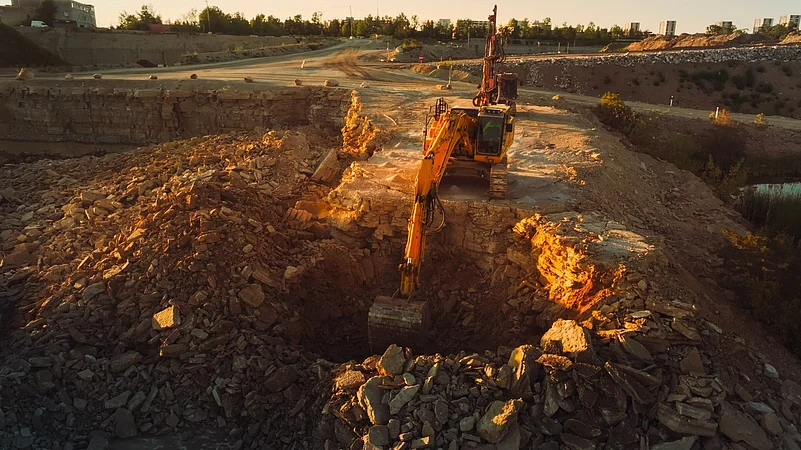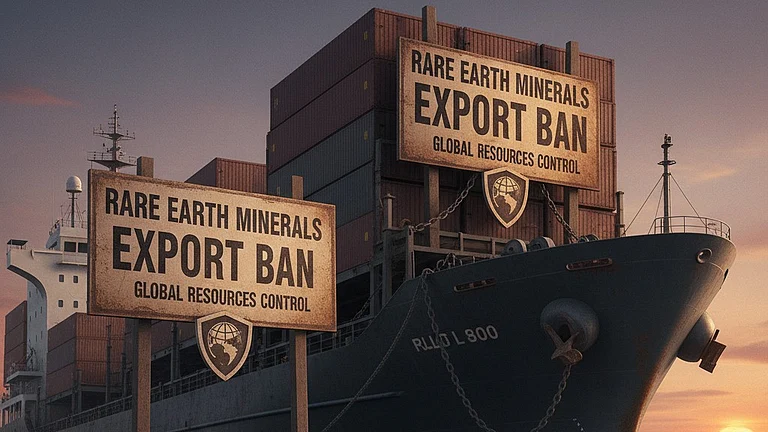It all started on April 2, when US President Donald Trump unveiled his reciprocal tariffs, which affected most of the US’s trading partners. Just two days later, China imposed a 34% tariff on all US imports, while simultaneously banning exports of rare earths.
What was launched by China in retaliation to the US’s trade measures looks all set to curtail the ambitions of India’s fledgling electric vehicle (EV) industry. India aims for 30% of all new vehicle sales to comprise of EVs by 2030, according to the India Brand Equity Foundation. According to the latest data from the Federation of Automobile Dealers Associations (FADA), total EV penetration in India across vehicle categories reached 7.8% in the fiscal year ending March 2025, up from 7.1% in FY24. The latest disruption in the supply of critical EV materials, however, may pose challenges in achieving this milestone.
The recent curbs introduced by China—which controls over 80% of the global supply chain for rare earths—have put the manufacturing timelines, component availability and cost structures of players across India’s EV ecosystem under pressure.
China refines around 35% of the global nickel supply, 50-70% of lithium and cobalt, and nearly 90% of rare earth elements, which include neodymium, praseodymium and terbium, among others. These metals are needed to make permanent magnets, which are critical in the manufacture of EV components.
Relying heavily on a single supplier has proven risky, as China’s move shows. To achieve its EV targets, India too should explore alternatives, much like how the US is reducing dependency on China by supporting local rare earth suppliers. Apple’s recent partnership with MP Materials to procure rare earth magnets is one such example.
How Rare are Rare Earth Minerals?
Just how rare are rare earth elements? Although China has cornered a large chunk of global rare Earth resources, along with its refining capacity over time, other countries have also been scouting for opportunities in the space. Mineral deposits have been found in India, Australia, Vietnam and the US, among other places.
However, they are not available in a ready to use form and they are found in small concentrations. According to a 2022 report published in MRS Bulletin, a typical deposit may contain 1–10 % rare earth elements by weight and the concentrate usually contains 50–60% rare earth elements, with an overall recovery from ore of 50–80%. Extracting these resources would require huge investments in terms of capital and time.
According to IEA’s data, analysis of major mines globally that started production between 2010 and 2019 shows that it takes around 16 years on average to move mining projects from discovery to first production.
Confounded by such a slow pace of kick starting these projects, it would be extremely difficult for supply and output to keep pace with demand in the face of disruptions such as the one we are seeing right now.
Moreover, if businesses delay starting new projects until there’s a shortage, it could result in long-lasting supply problems and unstable prices for the industry.
On the other end, even if one focuses on meeting the quantity demanded by industry, the issue of quality of resources comes into play. Getting rare earth metals from poor-quality ores could result in expenditure of more energy, while increasing production costs, pollution and waste in the entire process.
If we talk about India’s current capacities, the US Geological Survey (USGS) indicated that India has a significant amount of 6.9 million tonnes – the world’s fifth largest share of reserves. However, in 2023, the country produced only 2,900 tonnes.
A major reason why India has only a single public sector firm, IREL (India Rare Earths Limited) leading the extraction of monazite sand from beach minerals for nuclear use is refining capacity constraints. India is yet to build enough commercial refining capacity to meet the demand for extraction of other rare earth minerals.
In the absence of private sectors, there is no domestic magnet producer in the country and as a result, it relies heavily on China. In FY25, India imported 53,748 metric tons of rare earth magnets.
This calls for creating concrete mechanisms to eliminate dependency on China for accessing rare earth elements and adopting alternate methods of powering the electric vehicles back home.
Recently, Heavy Industries Minister HD Kumaraswamy proposed incentives of ₹1,345 crore to bolster domestic production of rare earth magnets.
"A scheme has been circulated for Rs 1,345 crore subsidy for manufacturers of rare earth magnets. It is currently under inter-ministerial consultation. It is proposed that there will be two manufacturers as of now, however, this could change by the time the scheme is ready," Kumaraswamy said.

































